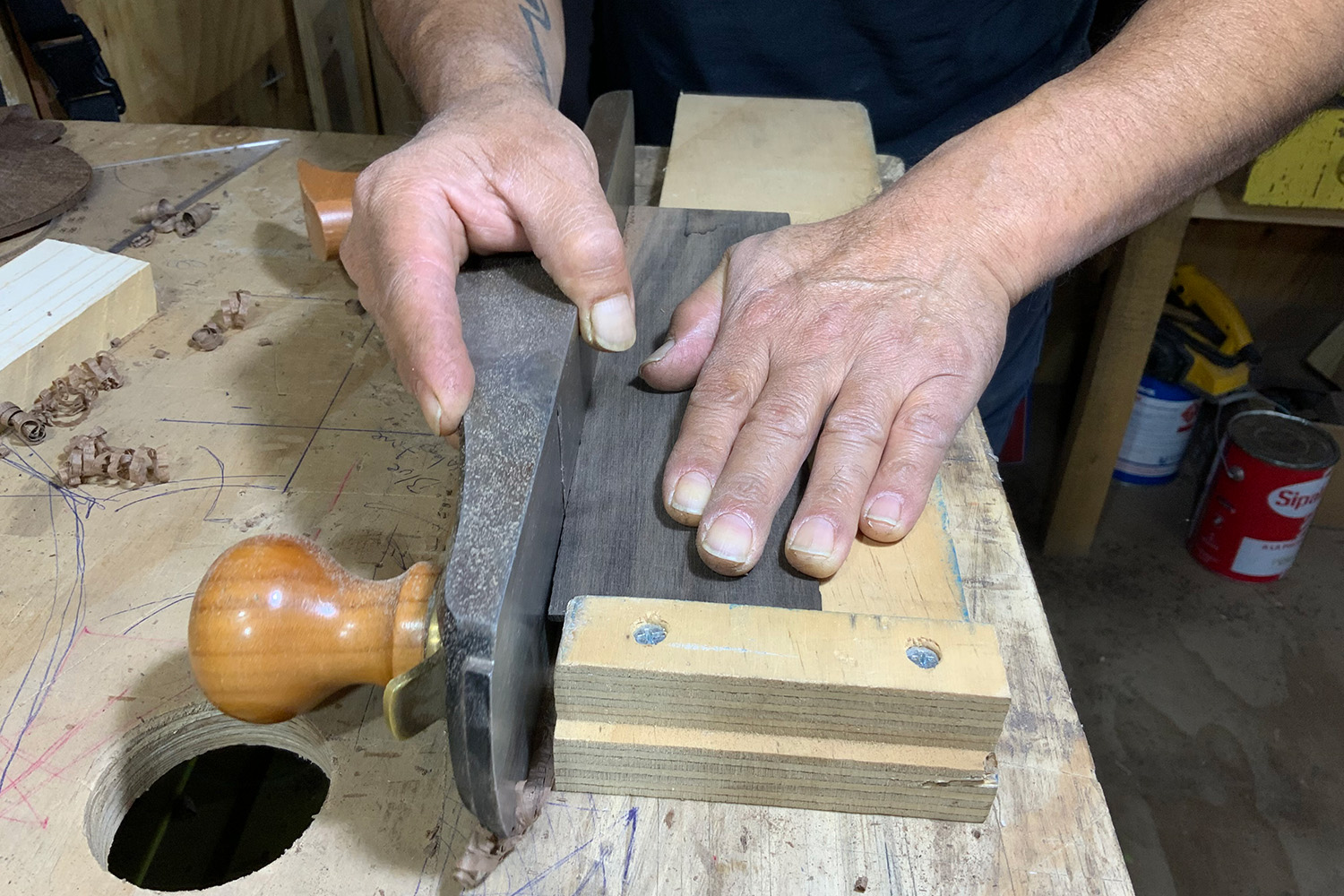
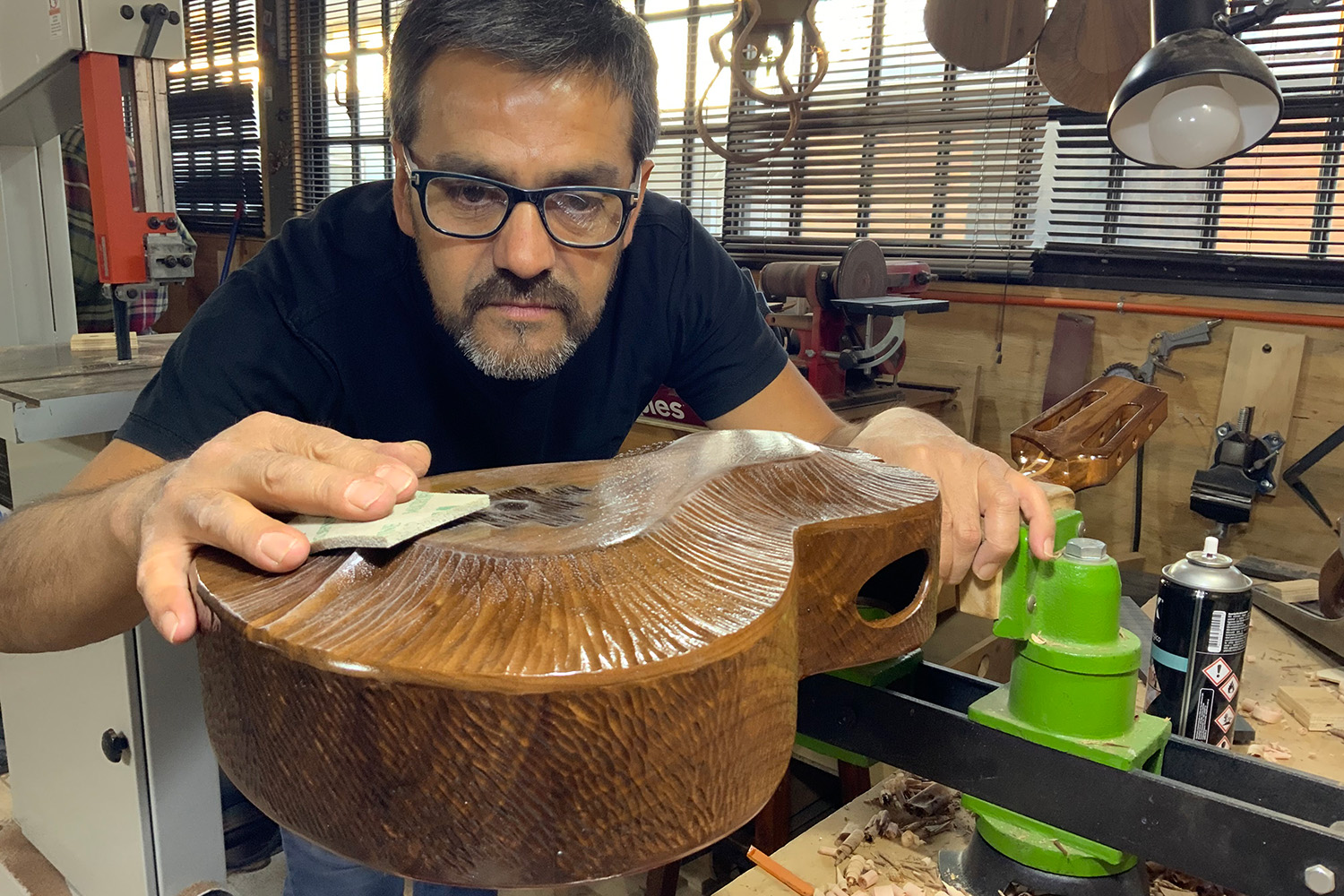
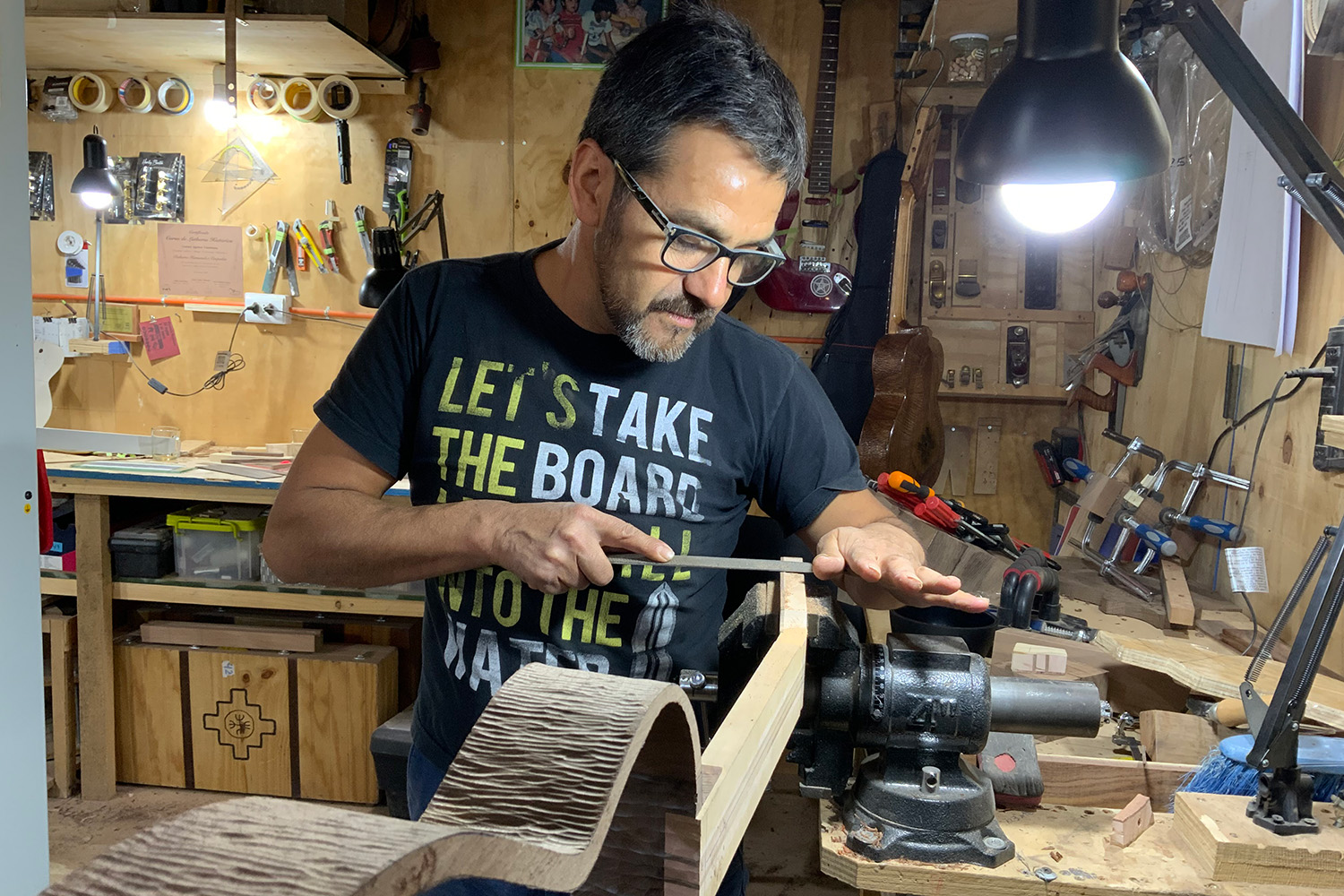
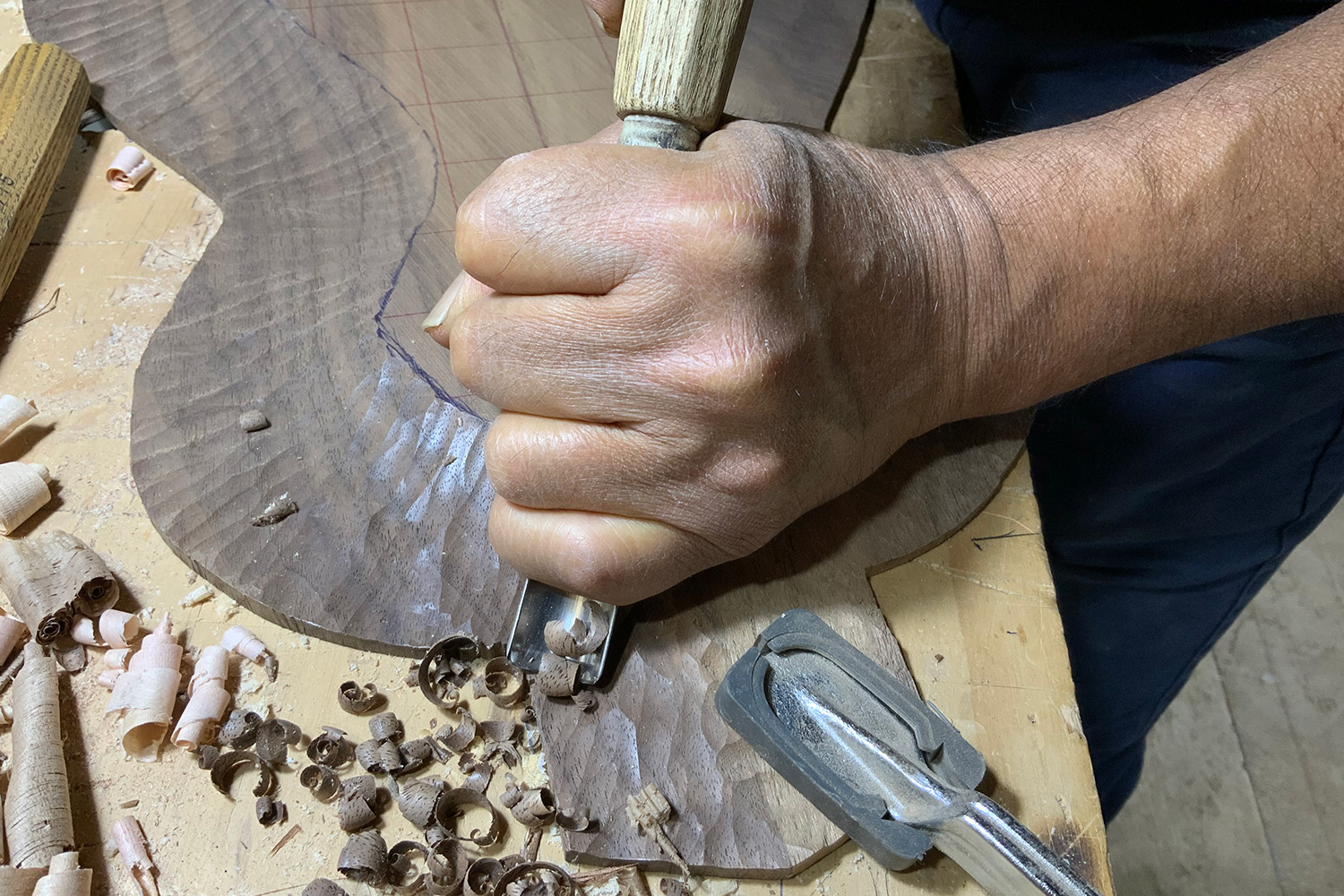
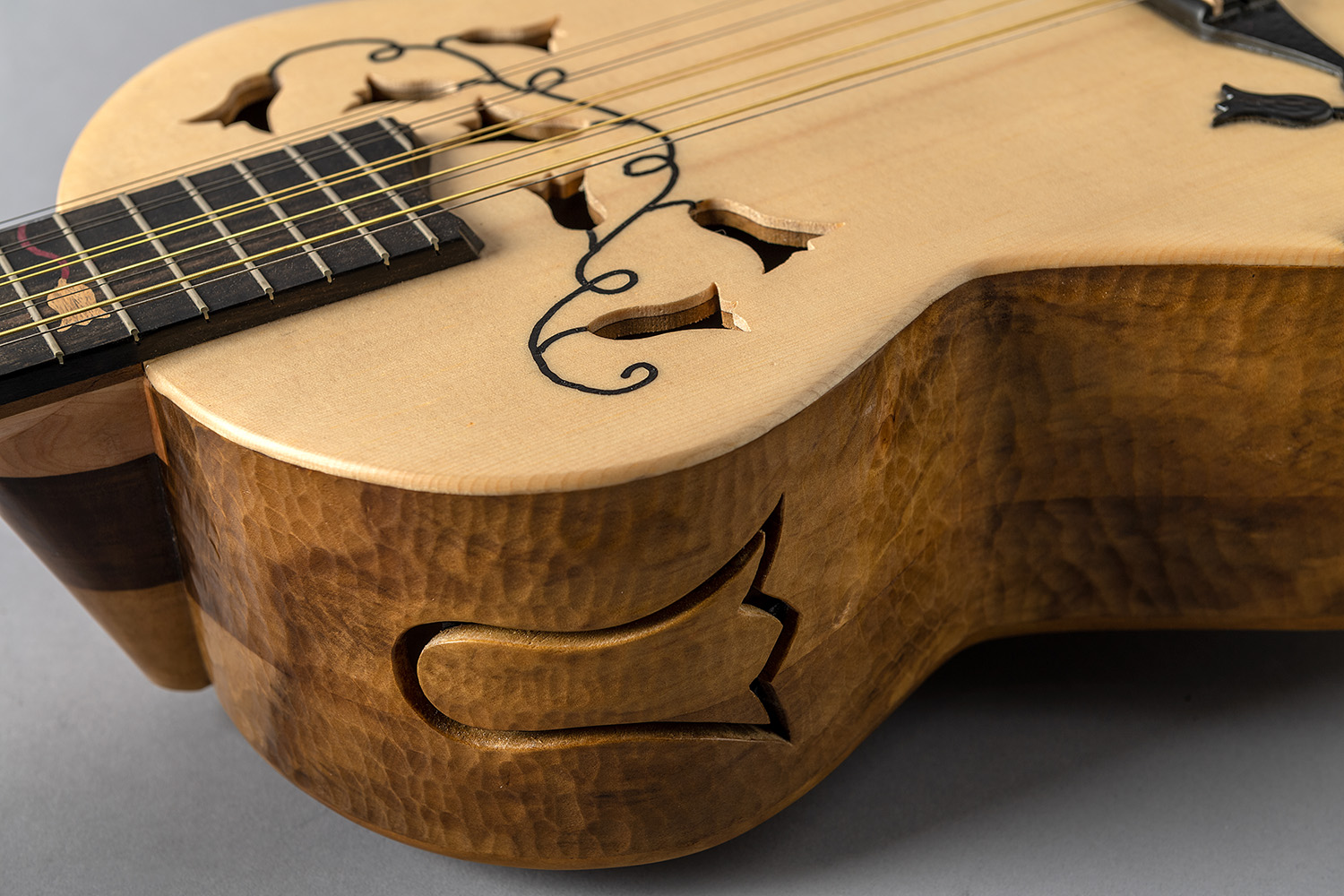





Roberto Hernández Céspedes began his apprenticeship in 2003 at UMCE University, where Latin American lutherie workshops were held for music students. "I was not a student at that university, but I was able to talk to teachers and get them to accept me in their classes," he says. He learned there for three years. "I worked with the maestro and did an apprenticeship in his personal workshop for a further three years." Roberto then contacted master Carlos López Menares, and learned classical guitar construction from 2012 to 2018 with him. He also went to Italy to learn baroque techniques for historical guitar construction with master Gabriel Aguilera. "During all this time I have applied elements of each master in my creative work. Currently, I am working on expanding my knowledge to violin making, with Hernán Dávila," adds Roberto.
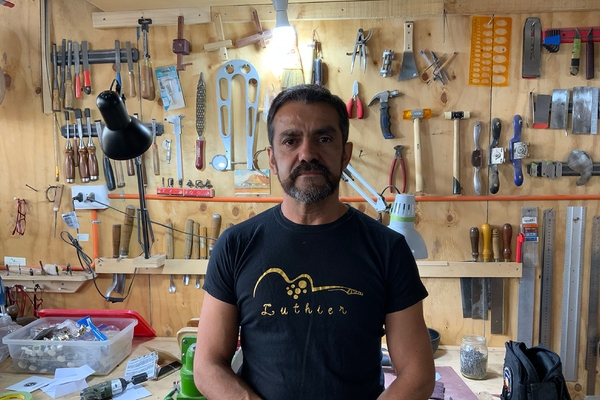
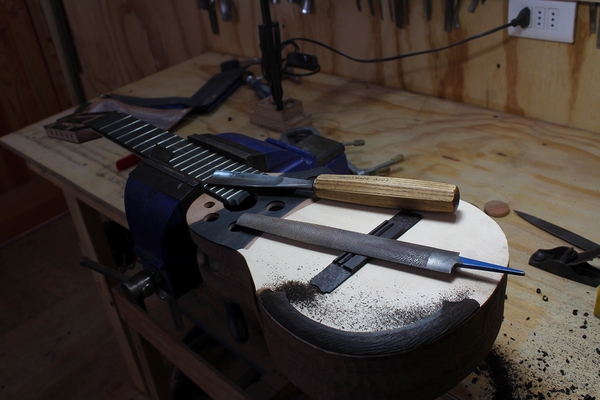
Roberto Hernández Céspedes